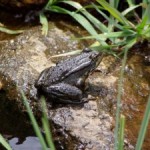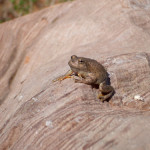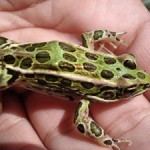Researchers at Oregon State University have discovered a freshwater organism that might help in fighting the chytrid fungus, which is a principal cause for the worldwide amphibian decline. A freshwater species of zooplankton, called Daphnia magna, could provide a tool for biological control of the deadly fungus whose impact, one researcher has called “the most spectacular loss of vertebrate biodiversity due to disease in recorded history.”
Daphnia magna is a variety of water fleas of the genus Daphnia, some species of which are commonly used as food for aquarium fish. It was known that the zooplankton could devour some types of fungi. Oregon researchers wanted to find out whether Daphnia magna could also consume the chytrid fungus that has been devastating amphibian populations worldwide, including Colorado’s endangered boreal toad.
Through extensive research, scientists confirmed that Daphnia magna could consume the free swimming spores of the fungal pathogen. According to lead researcher Julia Buck, an OSU doctoral student in zoology, in an Oregon State University press release:
We feel that biological control offers the best chance to control this fungal disease, and now we have a good candidate for that. Efforts to eradicate this disease have been unsuccessful, but so far no one has attempted biocontrol of the chytrid fungus. That may be the way to go.
Now scientists need to conduct field studies to confirm the zooplankton’s effectiveness in a natural setting. The OSU scientists have found that Daphnia inhabits amphibian breeding sites where chytrid transmission occurs and may be able to stem the unprecedented population declines and extinctions.
For background on the chytrid fungus, please see the video below that we found on the Save the Frogs site, produced by the National Science Foundation:
The Oregon State University research was reported in the journal Biodiversity and Conservation, and was supported by the National Science Foundation. Click here for the full report.




